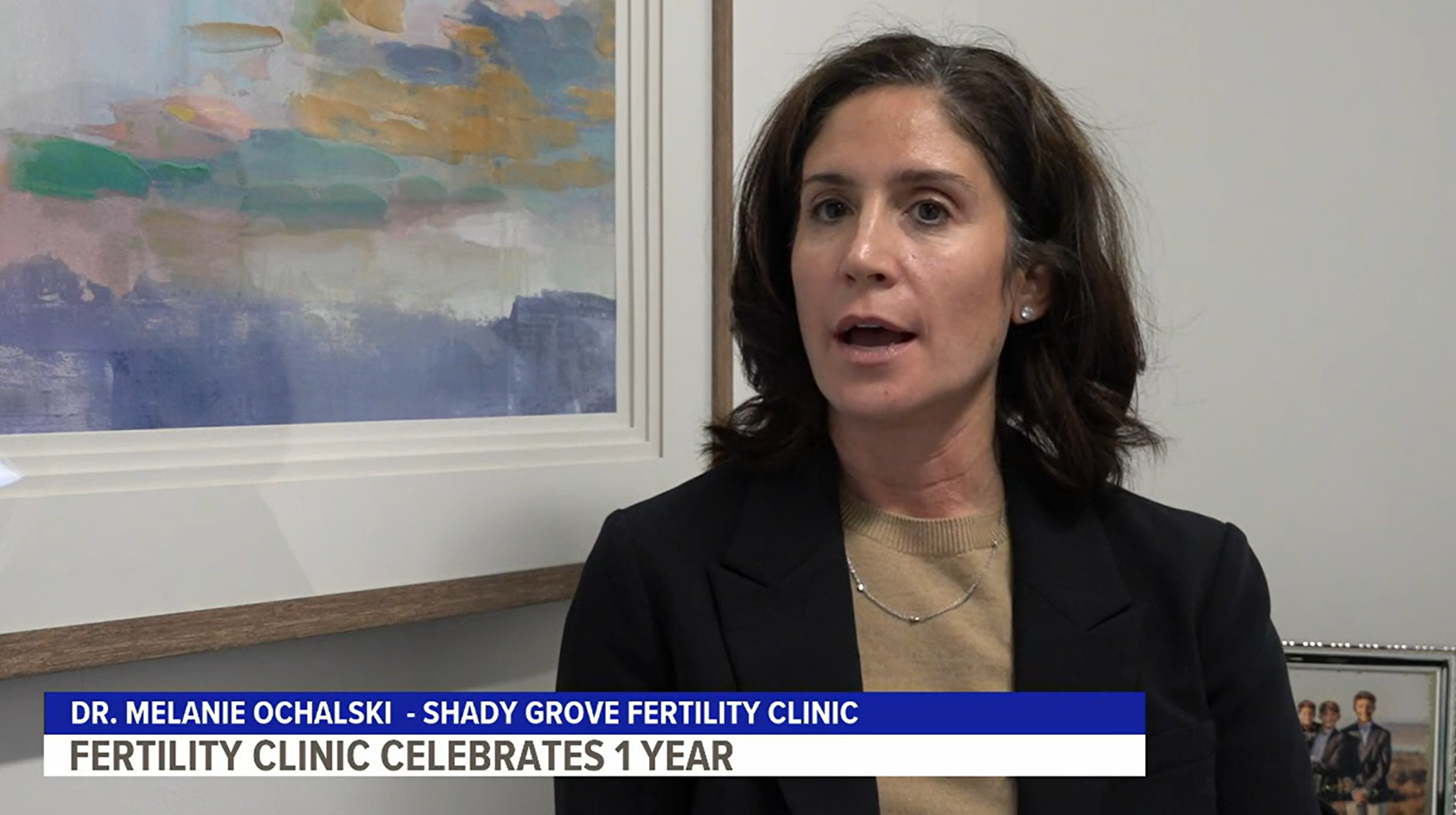For many patients who pursue fertility treatments, especially for intrauterine insemination (IUI) or in vitro fertilization (IVF), a common ritual becomes visits for morning monitoring during your treatment cycle. The goals of these sometimes-frequent appointments are to make necessary mid-course adjustments to your treatment protocol and to determine the best timing for ovulation or egg retrieval by monitoring estrogen levels and follicle size. This helps us achieve the best possible outcome for you while avoiding potential complications.
What is involved leading up to monitoring?
There are common initial steps in your fertility journey with Shady Grove Fertility – initial consultation with a physician, meeting with the nurse clinician nurse, initial Day 3 blood work, ultrasound, HSG, and semen analysis. Some of these tests may have been done prior to coming to see an SGF physician and can be incorporated without repeating.
Once a treatment plan has then been decided upon by your physician, the new protocol begins. This visit is very important because it provides your physician with baseline readings of hormone levels as well as an opportunity to view the uterus and ovaries via ultrasound.
“The ultrasound provides us with a view of the shape and musculature of the uterus, ability to see if there are any cysts present, and a visualization of the uterine lining,” explains Alex Polotsky, M.D., medical director of SGF Colorado, who sees patients at our Denver office. “Additionally, egg cells should be ‘immature’ and the follicles at a ‘resting state’.”
Typical baseline blood hormone levels prior to the start of medication for IUI & IVF should be:
- Estrogen – < 50pg/ml
- Human chorionic gonadotropin (hCG) – < 1 mIu/ml
- Progesterone – < 1ng/ml
Once your physician has reviewed the results of your blood work and ultrasound, you will receive a phone call from your nurse to confirm your medication protocol and to make an appointment for your next monitoring appointment.
How many monitoring appointments do I need?
The amount of monitoring necessary is tailored to each patient. A patient who is using oral ovulation stimulation medication such as clomiphene citrate (Clomid) or letrozole (Femara) with an IUI or timed intercourse cycle may require only 2 to 3 monitoring sessions, whereas patients using injectable medications in conjunction with either an IUI or IVF may need to be seen up to 7 times in a 2 week period.
“The number of times we bring a patient in for monitoring is usually related by the strength of the medication in their treatment protocol,” shares Dr. Polotsky. “Patients who are on lower strength stimulation drugs such as Clomid or Femara may need to be monitored less frequently. In contrast, patients on stronger, injectable medications need to be watched much closer to adjust the dose of medication being given for safety and effectiveness. Safety is paramount as we want to make sure patients have appropriate response. The so-called “Goldilocks Rule” is a good way to describe – we want just the RIGHT response, not too much and not too little.
What is the ideal follicle size and uterine lining to begin treatment?
At each visit, our physicians look for a balance between hormone levels and ovarian response. Since the hormone estrogen is the prime factor in both increasing follicle size and building up the uterine lining, making sure that levels continue to rise throughout the cycle is a key factor.
We look for the follicles and uterine lining to grow at an appropriate rate. So, if we see a patient with too high a response to the medication, then we will adjust it to slow them down some, while we will increase the medication for a patient who may be responding at a slower rate.
At that first monitoring appointment, the patient’s ovaries should be non-active or “resting” meaning that none of the follicles have begun maturing. As medication is introduced, the follicles will begin to grow, roughly an average of 2 mm per day during the later stages of stimulation. The increase of estrogen levels within the blood provides hormonal evidence that the follicles within the ovaries are maturing.
“The rate of follicular growth is dependent on the phase of the stimulation cycle,” explained Dr. Polotsky. “Early on, follicular growth may be minimal, but once the follicle(s) have committed to ‘active’ growth, then they may grow 1-3 mm per day.”
How many follicles should my ovaries be producing?
The number of follicles produced is dependent on the treatment option. For women who are utilizing an IUI cycle, physicians will look to keep the number of follicles lower to avoid the risks of multiple pregnancy, while in a more controlled IVF cycle a woman may produce a greater number of follicles because we can limit the number of embryos transferred later on.
“The expected number of follicles is dependent on many factors, primarily age and overall ovarian reserve,” said Dr. Polotsky. “The definition of a ‘good’ number of follicles varies from patient to patient and is based on their individual treatment protocol and type of stimulation they are undergoing.”
What is the ideal follicle size to trigger ovulation?
“The maturity of an egg in the follicle is in part reflected by the follicular size; on average, the ideal follicular size is 18 to 20 millimeters or larger, depending on the type of medications used,” explains Dr. Polotsky.
The increasing estrogen level is also responsible for building the uterine lining. An optimal measurement of thickness for the implantation of a fertilized egg is greater than 7 mm and preferably greater than 8 mm, regardless of the type of treatment one undergoes.
When the lead follicle(s) reach about 20mm in size, the estrogen is rising and the uterine lining is a thickened ‘feather pattern’ in a medicated cycle, it is time to administer HCG, or, for some patients undergoing IVF, Lupron. The HCG (or Lupron) brings about the final important phases of maturation of the egg in the follicle, as well as ovulation for an IUI cycle or to plan the proper timing for the egg retrieval in an IVF cycle. It is at this time that the follicle, the estrogen it is producing, and the responding uterine lining should all be working together to create the best environment for the introduction of a fertilized egg.
Monitoring at Shady Grove Fertility
By frequently checking the important variables in a fertility treatment cycle through these monitoring visits, we can provide the patient with the best chances of achieving their goals of successfully conceiving a healthy pregnancy and ultimately delivering a healthy baby, whether through IUI or IVF.
Medical contribution by Alex Polotsky, M.D.
Alex Polotsky, M.D., M.Sc., FACOG, is board certified in obstetrics and gynecology and reproductive endocrinology and infertility. He is the Medical Director for SGF Colorado. Dr. Polotsky sees patients at SGF Colorado’s Denver office.
Editor’s Note: This article was originally published in 2021 has been updated for content accuracy and comprehensiveness as of July 2022.






